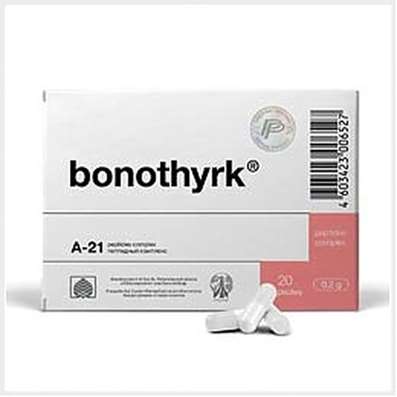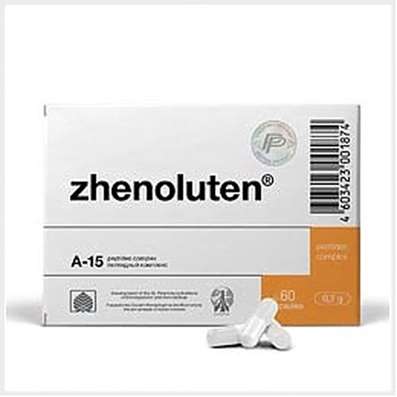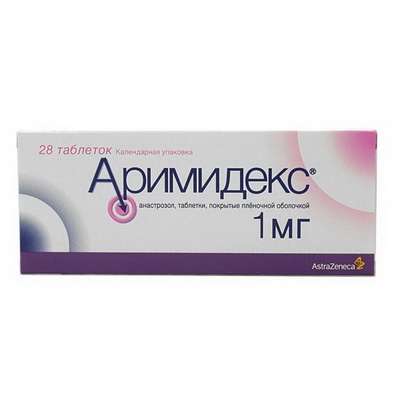Instruction for use: Artrozan
I want this, give me price
Active substance Meloxicam
└ĎŇ M01AC06 Meloxicam
Pharmacological group
Non-steroidal anti-inflammatory drug [NSAIDs - Oxicams]
Nosological classification (ICD-10)
M06.9 Other specified rheumatoid arthritis
Rheumatoid arthritis,Pain syndrome in rheumatic diseases, Pain in rheumatoid arthritis, Inflammation in rheumatoid arthritis, Degenerative forms of rheumatoid arthritis, Children's rheumatoid arthritis, Exacerbation of rheumatoid arthritis, Acute articular rheumatism, Rheumatic arthritis, Rheumatic polyarthritis, Rheumatoid arthritis, Rheumatic polyarthritis, Rheumatoid arthritis, Rheumatoid arthritis of active course, Rheumatoid arthritis, Rheumatoid polyarthritis, Acute rheumatoid arthritis, Acute rheumatism
M13.9 Arthritis, unspecified
Arthritis,Purulent arthritis (non-infectious), acute Arthritis,Pain in acute inflammatory diseases of the musculoskeletal system,Pain in chronic inflammatory diseases of the musculoskeletal system,The pain in osteoarthritis, Inflammation in osteoarthritis, Inflammatory arthropathy, Inflammatory and degenerative joint diseases, Inflammatory disease of the musculoskeletal system, Inflammatory joint disease, Inflammatory diseases of the musculoskeletal system, destructive arthritis, The disease of the musculoskeletal system, Diseases of the musculoskeletal system, Diseases of the musculoskeletal system and connective tissue, Infections musculoskeletal system, monoartrit, Non-infectious arthritis, rheumatic arthritis, Osteoarthritis, Acute inflammation of the musculoskeletal tissue, Acute inflammatory diseases of the musculoskeletal system, Acute inflammatory condition of the musculoskeletal system, Acute arthritis, Acute osteoarthritis, Post-traumatic osteoarthritis, Reactive arthritis, Chronic inflammatory diseases of the joints, Chronic arthritis, Chronic inflammatory arthritis, Chronic inflammation of the inner layer of the joint capsule, Chronic inflammation of the joint capsule,Chronic inflammatory disease of the joints, Exudative arthritis
M19.9 Arthrosis, unspecified
Change in brush with osteoarthritis, Osteoarthritis, Osteoarthrosis, Arthrosis of large joints, Pain syndrome in osteoarthritis, Pain syndrome in acute inflammatory diseases of the musculoskeletal system, Pain syndrome in chronic inflammatory diseases of the musculoskeletal system, Deforming arthrosis, Deforming osteoarthritis, Deforming osteoarthritis of joints, Osteoarthritis in the acute stage, Osteoarthritis of large joints, Acute pain syndrome with osteoarthritis, Post-traumatic osteoarthritis, Rheumatic osteoarthritis, Spondylarthrosis, Chronic osteoarthritis
M25 Other joint damage, not elsewhere classified
Restoration of joint tissues Degenerative diseases of joints, Degenerative joint damage, Chronic degenerative joint diseases, Chronic joint diseases, Chronic degenerative joint disease
M25.5 Pain in the joint
Arthralgia, Pain syndrome in musculo-articular diseases, Pain syndrome in osteoarthritis, Pain syndrome in osteoarthritis, Pain syndrome in acute inflammatory diseases of the musculoskeletal system, Pain syndrome in chronic inflammatory diseases of the musculoskeletal system, Pain in the joints, Soreness of the joints, Soreness of joints in severe physical exertion, Painful inflammatory joint damage, Painful conditions of the musculoskeletal system, Painful joint conditions, Painful traumatic affection of joints, Pain in the musculoskeletal system, Pain in Shoulder Joints, Pain in the joints, Joint pain, Joint pain with injuries, Musculoskeletal pain, Pain with osteoarthritis, Pain in the pathology of the joints, Pain in rheumatoid arthritis, Pain in chronic degenerative bone diseases, Pain in chronic degenerative joint diseases, Bone-joint pain, Joint pain, Arthritic pain of rheumatic origin, Articular pain syndrome, Joint pain, Rheumatic pain, Rheumatic pains
M42 Osteochondrosis
Pain in spinal osteochondrosis, Cervical osteochondrosis, Radicular syndrome in osteochondrosis, intervertebral osteochondrosis, osteochondrosis, Osteochondrosis with radicular syndrome, Osteocondritis of the spine
M45 Ankylosing spondylitis
Ankylosing spondylarthrosis, Marie-Strumpel disease, Ankylosing spondylitis, Pain syndrome in acute inflammatory diseases of the musculoskeletal system, Pain syndrome in chronic inflammatory diseases of the musculoskeletal system, Bechterew's disease, Ankylosing spondylitis, Diseases of the spinal column, Rheumatic spondylitis, Bechterew-Marie-Strumpel disease
M79.1 Myalgia
Myofascial pain syndromes ,Pain syndrome in musculo-articular diseases, Pain syndrome in chronic inflammatory diseases of the musculoskeletal system, Pain in the muscles, Tenderness of muscles, Muscular soreness in severe physical exertion, Painful conditions of the musculoskeletal system, Pain in the musculoskeletal system, Pain in the muscles, Pain at rest, Muscle aches, Muscle pain, Musculoskeletal pain, Myalgia, Muscle pain, Muscle pain at rest, Muscle pain, Muscular pain of non-rheumatic origin, Muscle pain of rheumatic origin, Acute muscle pain, Rheumatic pain, Rheumatic pains, Myofascial syndrome, Fibromyalgia
R52.9 Unspecified Pain
Pain after cholecystectomy, Pain shooting, Non-malignant pain, Obstetric and gynecological pain, Pain syndrome, Pain in the postoperative period, Pain in the postoperative period after orthopedic surgery, Pain of inflammatory genesis, Pain than cancer genesis, Pain syndrome after diagnostic procedures, Pain after surgery Diagnostic, Pain after surgery, Pain after orthopedic surgery, Pain after injuries, Pain after the removal of hemorrhoids, Pain at the non-rheumatic inflammation of nature, Pain in inflammatory lesions of the peripheral nervous system, Pain in diabetic neuropathy, Pain in acute inflammatory diseases of the musculoskeletal system, Pain when the tendon pathology, Pain smooth muscle spasm, Pain spasm of smooth muscles (renal and biliary colic, intestinal spasms, dysmenorrhea), Pain spasm of smooth muscles of internal organs, Pain spasm of smooth muscles of internal organs (kidney and biliary colic, intestinal spasms, dysmenorrhea), Pain in trauma syndrome, Pain with injuries and after surgical interventions, Pain in chronic inflammatory diseases of the musculoskeletal system, Pain with duodenal ulcer, Pain syndrome in gastric ulcer, Pain syndrome in gastric ulcer and duodenal ulcer, pain, Pain during menstruation, pain syndromes, painful condition, Painful foot fatigue, Sore gums when wearing dentures, Soreness of the cranial nerves exit points, Painful menstrual irregularities, Painful dressings, Painful muscle spasm, Painful teeth growth, Melosalgia, Pain in the area of the surgical wound, Pain in the postoperative period, Pain in the body, Pain after diagnostic procedures, Pain after orthopedic surgery, Pain after surgery, The pains of the flu, Pain in diabetic polyneuropathy, Pain for burns, Pain during sexual intercourse, Pain during diagnostic procedures, Pain during therapeutic procedures, for colds Pain, Pain in sinusitis, Pain in trauma, Pain traumatic, The pain in the postoperative period, Pain after diagnostic procedures, The pain after sclerotherapy, Pain after surgery, postoperative Pain, Pain postoperative and posttraumatic, posttraumatic pain, Pain when swallowing, Pain in infectious and inflammatory diseases of the upper respiratory tract, The pain of burns, The pain in traumatic muscle injury, Pain in trauma, The pain of tooth extraction, The pain of traumatic origin, Pain caused by spasm of smooth muscles, Expressed pain syndrome, Expressed pain syndrome, traumatic origin, Postoperative pain, Post-traumatic pain, Post-traumatic pain syndrome, Torpid pain, Traumatic pain, Traumatic pain, Mild pain, Moderately severe pain, Moderate pain, Polyarthralgia with polymyositis
Composition
Tablets 1 tablets
active substance:
meloxicam 7.5 mg/15 mg
auxiliary substances: potato starch - 64.5 / 94.5 mg; lactose monohydrate - 100/150 mg; povidone (polyvinylpyrrolidone, medium molecular weight medical) - 3.2 / 4.5 mg; sodium citrate - 18.8 / 27 mg; magnesium stearate - 2/3 mg; silicon dioxide colloid (aerosil) - 4/6 mg
Description of dosage form
Tablets: from light yellow to yellow, round, flat-cylindrical, with a facet and a risk. Allowed a slight marbling.
pharmachologic effect
Pharmacological action - anti-inflammatory, analgesic, inhibiting COX (cyclooxygenase).
Pharmacodynamics
Artrozan« is an NSAID with anti-inflammatory, antipyretic and analgesic action. It belongs to the class of oxyocams, it is a derivative of enolic acid.
The mechanism of action is associated with inhibition of the synthesis of PG (prostaglandins) as a result of selective inhibition of the enzymatic activity of COX-2, which participates in the biosynthesis of PG in the inflammatory region. When administered in high doses, prolonged use and individual characteristics of the organism, the selectivity for COX-2 decreases. It acts to a lesser extent on COX-1, which participates in the synthesis of PG, which protects the mucous membrane of the gastrointestinal tract and takes part in the regulation of blood flow in the kidneys. Due to this selectivity of inhibition of COX-2 activity, the drug less often causes erosive and ulcerative lesions of the gastrointestinal tract.
Pharmacokinetics
Well absorbed from the digestive tract, absolute bioavailability - 89%. Simultaneous food intake does not change the absorption of the drug. When using the drug inside at doses of 7.5 and 15 mg, its concentrations are proportional to the doses. Css is reached within 3-5 days of treatment. With prolonged use of the drug (more than 1 year), the concentrations are similar to those noted after the first achievement of a steady state of pharmacokinetics.
Binding to plasma proteins is 99%. When using a dose of 7.5 mg Cmin is 0.4 μg / ml, Cmax is 1 μg / ml; when using a dose of 15 mg Cmin - 0.8 μg / ml, Cmax - 2 μg / ml. Almost completely metabolized in the liver with the formation of four pharmacologically inactive derivatives. The main metabolite, 5'-carboxymeloxicam (60% of the dose value), is formed by oxidation of the intermediate metabolite, 5'-hydroxymethylmeloxicam, which is also excreted, but to a lesser degree (9% of the dose value). In vitro studies have shown that the isozyme CYP2C9 plays an important role in this metabolic transformation, the CYP3A4 isoenzyme plays an additional role. In the formation of two other metabolites (which make up 16 and 4% of the dose, respectively), peroxidase takes part, the activity of which is likely to vary.
The drug penetrates through the histogematic barriers, the concentration in the synovial fluid is 50% Cmax in the plasma.
Plasma clearance is an average of 8 ml / min. In elderly people, the clearance of the drug is reduced. Vd is low and averages 11 liters. Hepatic or renal failure of moderate severity does not significantly affect the pharmacokinetics of meloxicam.
It is excreted in equal proportion with feces and urine, mainly in the form of metabolites. Through the intestine, less than 5% of the daily dose is excreted unchanged, in urine, in unchanged form, the drug is found only in trace amounts. T1 / 2 meloxicam is 15-20 hours.
Indications
Symptomatic treatment of the following conditions and diseases:
osteoarthritis;
rheumatoid arthritis;
ankylosing spondylitis (Bekhterev's disease);
osteochondrosis;
inflammatory and degenerative diseases of the musculo-articular system, accompanied by pain syndrome.
Contraindications
hypersensitivity to meloxicam or auxiliary components of the drug;
rare hereditary diseases, such as galactose intolerance, lactase deficiency or glucose-galactose malabsorption (since lactose is included in the formulation);
heart failure in the stage of decompensation;
early postoperative period after aortocoronary shunting;
complete or incomplete combination of bronchial asthma, recurrent nasal polyposis and paranasal sinuses and intolerance to acetylsalicylic acid or other NSAIDs (including in anamnesis);
exacerbation of peptic ulcer of the stomach and duodenum;
active gastrointestinal bleeding;
inflammatory bowel disease (ulcerative colitis, Crohn's disease in the acute stage);
cerebrovascular bleeding or other bleeding;
severe hepatic impairment or active liver disease;
chronic renal failure (in patients not undergoing hemodialysis (Cl creatinine less than 30 ml / min);
progressive kidney disease, incl. confirmed hyperkalemia;
pregnancy;
the period of breastfeeding;
children's age till 15 years.
With caution: patients of advanced age; presence of the following conditions in the history: coronary heart disease, congestive heart failure, cerebrovascular disease, dyslipidemia / hyperlipidemia, diabetes mellitus, peripheral vascular disease, chronic renal failure with Cl creatinine 30-60 ml / min; ulcerative gastrointestinal lesions, presence of Helicobacter pylori infection; long-term use of NSAIDs; alcohol abuse; concomitant therapy with anticoagulants (eg warfarin), antiplatelet agents (eg acetylsalicylic acid, clopidogrel), oral GCS (eg prednisolone), SSRIs (eg citalopram, fluoxetine, sertraline, paroxetine). To reduce the risk of developing adverse events from the gastrointestinal tract, the minimum effective dose should be used as short a course as possible.
Side effects
The incidence of adverse reactions is classified as follows: often (≥1%, <10%); infrequently (≥0.1%, <1%); rarely (≥0.01%, <0.1%).
From the digestive system: often - dyspepsia, incl. nausea, vomiting, abdominal pain, diarrhea, constipation, flatulence; infrequent - transient increase in hepatic transaminase activity, hyperbilirubinemia, belching, esophagitis, stomach or duodenal ulcer, gastrointestinal bleeding (latent or apparent), stomatitis; rarely - perforation of the digestive tract, colitis, hepatitis, gastritis.
On the part of the organs of hematopoiesis: often - anemia; infrequently - leukopenia, thrombocytopenia.
From the skin: often - itching, skin rash; infrequently - hives; rarely - photosensitivity, bullous eruptions, erythema multiforme, incl. Stevens-Johnson syndrome, toxic epidermal necrolysis.
From the respiratory system: rarely - bronchospasm.
From the central nervous system (central nervous system): often - dizziness, headache; infrequently - a noise in the ears, drowsiness; rarely - emotional lability, confusion, disorientation.
From the CCC (cardiovascular system): often - peripheral edema; infrequently - increased blood pressure, a feeling of palpitations, hyperemia of the face.
From the side of the urinary system: infrequently - hypercreatininaemia, increased serum urea concentration; rarely acute renal failure; connection with the reception of meloxicam is not established - interstitial nephritis, albuminuria, hematuria.
From the senses: rarely - conjunctivitis, blurred vision.
Allergic reactions: rarely - angioedema, anaphylactic, anaphylactoid reactions.
Interaction
Other NSAIDs (including acetylsalicylic acid): the risk of erosive and ulcerative lesions and gastrointestinal bleeding increases.
Hypotensive drugs: it is possible to reduce the effectiveness of the latter.
Lithium preparations: it is possible to develop lithium cumulation and increase its toxic effect (it is recommended to control the concentration of lithium in the blood).
Methotrexate: the side effect of the latter on the hematopoietic system is increased (the risk of anemia and leukopenia, periodic monitoring of the general blood test is shown).
Diuretics and cyclosporine: the risk of developing kidney failure increases.
Intrauterine contraceptive means: it is possible to decrease the effectiveness of the latter.
Anticoagulants (heparin, warfarin), thrombolytic drugs (streptokinase, fibrinolysin) and antiplatelet agents (ticlopidine, clopidogrel, acetylsalicylic acid): the risk of bleeding increases (periodic monitoring of blood clotting indices is necessary).
Kolestyramin: accelerates the excretion of meloxicam through the digestive tract.
SSRIs (selective serotonin reuptake inhibitors): the risk of developing gastrointestinal bleeding increases.
Dosing and Administration
Inside, with meals at a daily dose of 7.5-15 mg.
Recommended dosing regimen
Rheumatoid arthritis: 15 mg / day. If necessary, the dose can be reduced to 7.5 mg / day.
Osteoarthritis, osteochondrosis and other inflammatory and degenerative diseases of the musculo-articular system, accompanied by pain syndrome: 7.5 mg / day. If the dose is ineffective, it can be increased to 15 mg / day.
Ankylosing spondylitis: 15 mg / day.
The maximum daily dose should not exceed 15 mg. In patients with an increased risk of side effects, as well as severe renal failure, on hemodialysis, the dose should not exceed 7.5 mg / day.
Overdose
Symptoms: impaired consciousness, nausea, vomiting, epigastric pain, bleeding in the gastrointestinal tract, acute renal failure, hepatic failure, respiratory arrest, asystole.
Treatment: there are no specific antidotes and antagonists of the drug. Purpose of gastric lavage, activated charcoal (within the next hour), symptomatic therapy. Forced diuresis, alkalinization of urine, hemodialysis are ineffective because of the high connection of the drug with blood proteins.
special instructions
Caution should be exercised when using the drug in patients who have a history of gastric ulcer and duodenal ulcer and patients on anticoagulant therapy. In such patients, the risk of erosive and ulcerative gastrointestinal diseases is increased.
Caution should be exercised and daily diuresis and renal function should be monitored when the drug is used in the elderly and in patients with reduced BCC and reduced glomerular filtration (dehydration, CHF, liver cirrhosis, nephrotic syndrome, clinically pronounced kidney disease, diuretics, dehydration after major surgery).
In patients with a slight or moderate decrease in renal function (Cl creatinine 30-60 ml / min), dose adjustment is not required.
Patients taking both diuretics and meloxicam should take a sufficient amount of fluid.
In case of allergic reactions (itching, skin rash, urticaria, photosensitization), it is necessary to consult a doctor in order to resolve the issue of stopping the drug.
Meloxicam, like other NSAIDs, can mask the symptoms of infectious diseases.
The use of meloxicam, as well as other drugs that block the synthesis of PG, can affect fertility, so it is not recommended for women planning a pregnancy.
Influence on the ability to drive vehicles and work with machinery. In connection with the possibility of headache, dizziness and drowsiness, during the period of treatment, patients should abandon the management of vehicles and perform other potentially dangerous activities that require an increased concentration of attention and speed of psychomotor reactions.
Form of issue
Tablets, 7.5 mg, 15 mg. In the outline of the cell, 10, 15, 20 pcs. 1, 2, 3 or 5 contour mesh packages in a pack of cardboard.
Conditions of leave from pharmacies
On prescription.
storage conditions
At a temperature of no higher than 25 ░ C.
Keep out of the reach of children.
Shelf life
3 years.
Do not use after the expiry date printed on the package.

 Cart
Cart





